Official Twitter: https://twitter.com/MetisDAO
Official website: https://www.metis.io/
Whitepaper: https://drive.google.com/file/d/1LS7CmKFt-FkfVXxSNu06hNgoZXxMzTC-/view
What is MetisDAO?
MetisDAO is an open framework built on a Layer 2 protocol for creating, managing, and growing decentralized autonomous companies (DAC). It distinguishes between DAO and DAC, describing DAC as a subclass of DAO. While DAO focuses primarily on governance issues, DAC is specifically designed to address the day-to-day operational and management issues of projects.
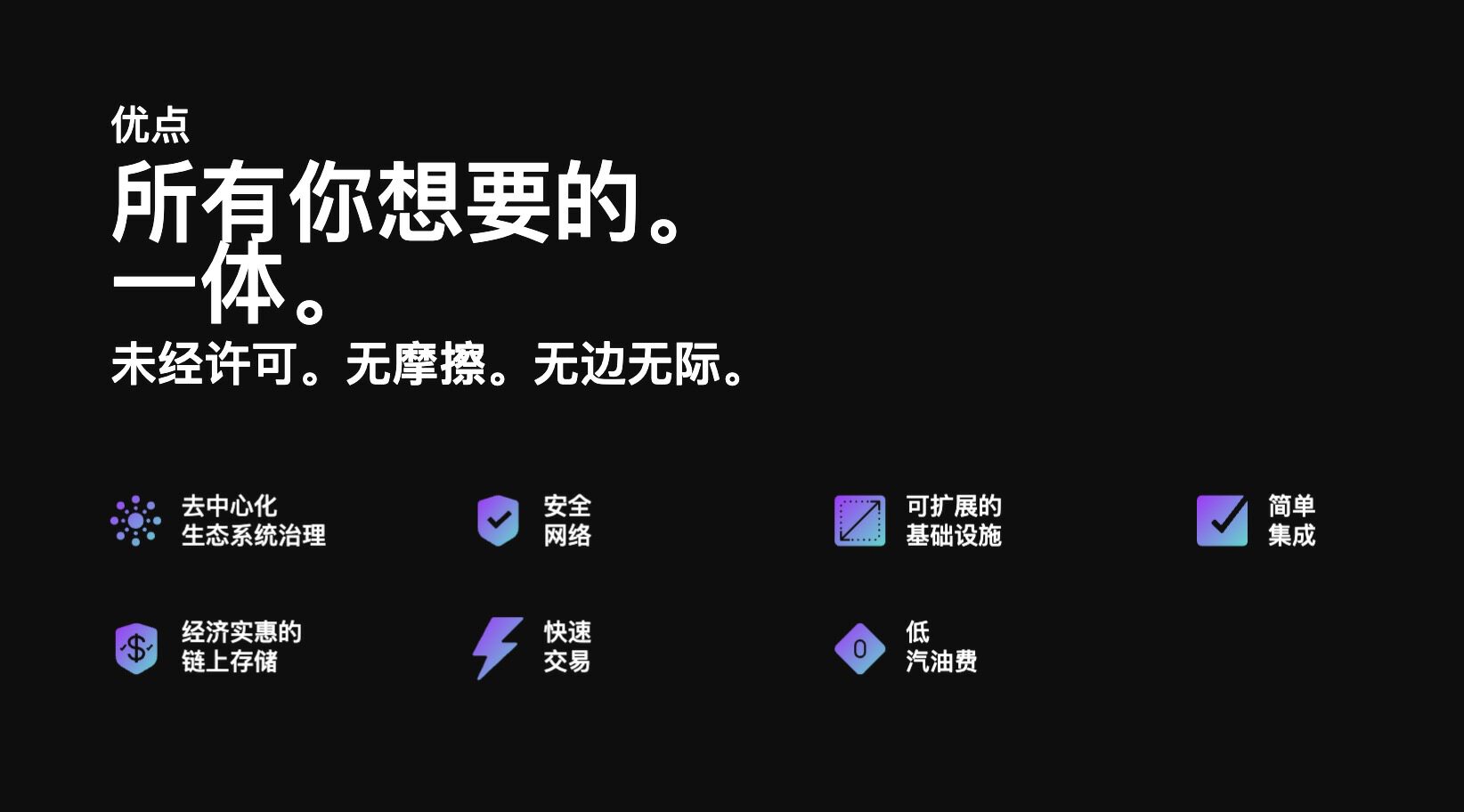
The goal of MetisDAO is to build sustainable, decentralized companies on high-performance underlying blockchains. It provides an open framework that allows anyone to deploy DAOs or DACs on-chain and run and manage their own communities, applications, and enterprises.
MetisDAO's services are not limited to the DAO level; it also establishes a standard module to measure everyone in the DAO, including wallets, RP (Reputation Points), various attributes, and basic optimistic governance mechanisms. When two people want to collaborate, Metis helps them establish connections and trust between each other and execute specific tasks.
In Metis's vision, they hope that all Web2 applications (such as e-commerce, social, search) and various communities can quickly build DApps (decentralized applications) on chains like Ethereum, including DeFi and NFT, and manage collaboration between communities and data computation layers using blockchain-based tools, establishing an efficient distributed autonomous company (DAC), making it easier and more efficient to build DApps and manage communities on the blockchain.
What problems does Metis solve?
Metis solves the three challenges of Ethereum's persistent blockchain, making it possible to achieve all three ideal properties of blockchain:
Decentralization
Security
Scalability
The significant increase in demand for Ethereum has led to soaring transaction fees while transaction speeds lag behind. As an Ethereum smart L2, Metis improves transaction speed (faster fragmentation completion) and throughput (more transactions per second).
Most importantly, Metis is creating an accessible, affordable, and adaptable solution so that anyone can use blockchain technology to build, run, and develop any application, business, and community.
Metis compared to other popular Layer2 solutions
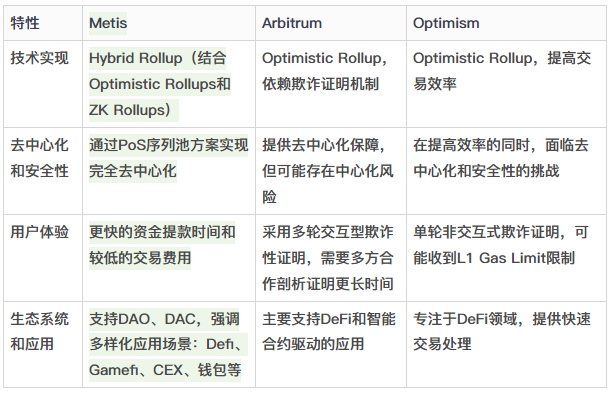
Funding Information
MetisDAO's funding situation shows that the project has received an investment with a Fully Diluted Valuation (FDV) of 8 billion USD. The total funding amount is 5 million USD, with funding institutions including Ralf P. Gerteis, P1X Capital, Waterdrip Capital, DFG, Chain Capital, AC Capital, Block.power, Combinator, Hotbit, SSSnodes, Crasolum, Kernel Ventures, CatcherVC, Jubi Labs, and others.
Team Background
Elena Sinelnikova: CEO and co-founder of MetisDAO, a finalist for the Best Female in Canadian FinTech and Blockchain. Elena has a technical background, having served as a Microsoft Solution Architect for the Canadian government and law enforcement for over 20 years. She began studying blockchain in 2015 and co-founded CryptoChicks, a women's organization dedicated to blockchain education, with her friend Natalia Ameline in 2017. Before becoming a co-founder of MetisDAO, she worked with Kevin Liu and Yuan Su to develop the predecessor of the Metis protocol, the Token Economic Institute, and has extensive experience working together.
Kevin Liu: Co-founder of MetisDAO with over 5 years of product development experience, focusing on DAO, governance, and decentralized collaboration research. Before joining Metis, Kevin Liu co-founded Token Economy Labs Inc. in 2018 and was responsible for building communities in Canada and the United States. He served as Vice President of Strategic Development at StarsChina Technology Ltd. (November 2011 to September 2015) and Vice President (September 2015 to June 2018).
Yuan Su: Co-founder of MetisDAO, serving as Chief Technology Officer and head of the development team, responsible for building strong technical support to ensure stability and innovation.
Lya Glaentzlin: A lawyer with over 30 years of experience in business law, energy, securities, mergers and acquisitions, and a member of the Metis team.
Project Background
Macro perspective: Development of the Ethereum ecosystem: While Ethereum allows developers to build and deploy smart contracts and decentralized applications (DApps), the first-layer network of Ethereum has some limitations, such as high transaction costs, low throughput, and scalability issues. Therefore, there is a demand in the market to build cheaper, faster, and more scalable solutions on Ethereum.
Project itself: MetisDAO is a Layer2-based DAO protocol designed to leverage the current DAO infrastructure while opening access to a full set of management and community tools, driving the realization of the Web 3.0 revolution. MetisDAO was first launched in 2018 and has a highly scalable and unique architecture that sets it apart in the DAO platform.
Layer2 technology: MetisDAO adopts Layer2 technology, a second-layer solution built on the Ethereum blockchain. By leveraging Layer2 technology, MetisDAO is able to provide higher transaction throughput, lower transaction costs, and faster confirmation times, thereby enhancing the scalability and performance of the entire system.
DAO protocol: MetisDAO is a project based on the DAO protocol, allowing users to participate in project governance and decision-making processes. Through the DAO protocol, MetisDAO provides a decentralized organizational form, enabling participants to collectively manage and operate the project.
Openness and accessibility: MetisDAO is committed to opening access to a full set of management and community tools, allowing anyone to participate in the project and contribute to it. This openness and accessibility provide a broader space for the development and innovation of the project.
How does Metis work?
Metis operates as a complement to the Ethereum blockchain. As a Layer2 solution, the core function of Metis is to bundle Layer2 transactions and transmit them to the Layer1 network, thereby alleviating the burden on the Ethereum blockchain. This approach aims to speed up transaction processing and address the high gas fees on Ethereum.
At the implementation level, Metis adopts its innovatively proposed "Hybrid Rollups" solution. This scheme combines two mainstream blockchain scaling technologies: Optimistic Rollup (OP Rollup) and Zero-Knowledge Proofs Rollup (ZKPs Rollup).
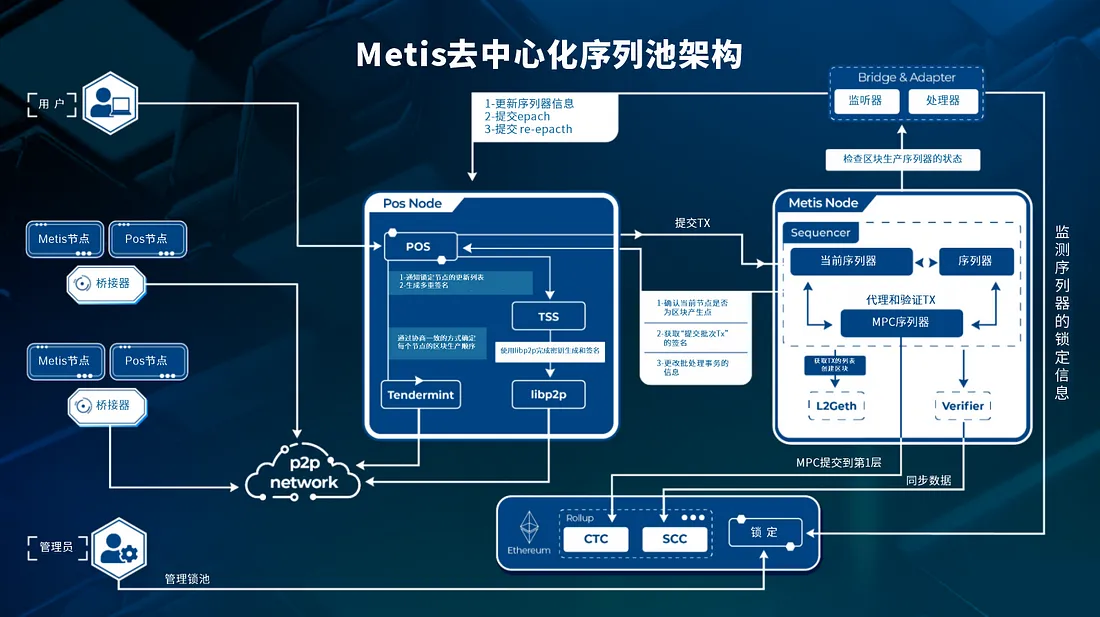
OP Rollup accelerates transaction processing by assuming all transactions are initially valid. This assumption allows for faster confirmation of transactions, thereby increasing the overall network throughput. In Metis' Hybrid Rollup architecture, this efficiency is retained, allowing the system to process a large number of transactions quickly.
ZKPs Rollup uses zero-knowledge proofs to verify the validity of transactions. This method reduces the amount of tamperable information, increasing not only security but also user privacy protection.
Metis' Hybrid Rollup solution effectively reduces the risk of fraudulent and erroneous transactions by combining OP Rollup and ZKPs. OP Rollup handles potential dishonest transactions using its fraud-proof mechanism, while ZKPs provide a more secure verification method to ensure only valid transactions are confirmed.
As a result, Metis' Hybrid Rollup solution is both efficient and secure in processing a large number of transactions, significantly reducing user withdrawal time from the original 7 days to just 4 hours. Additionally, the scalability of the entire system is unrestricted, and any EVM-compatible DApp can seamlessly integrate with Metis.
To become the first fully decentralized Layer 2 infrastructure on Ethereum, Metis has introduced a PoS-based sequencer pool scheme. Sequencers in the Layer 2 network are responsible for sorting, organizing, packaging, and submitting transactions to the Layer 1 network. In Metis' model, the establishment of a pool consisting of multiple sequencers enhances transaction processing speed and network fault tolerance.
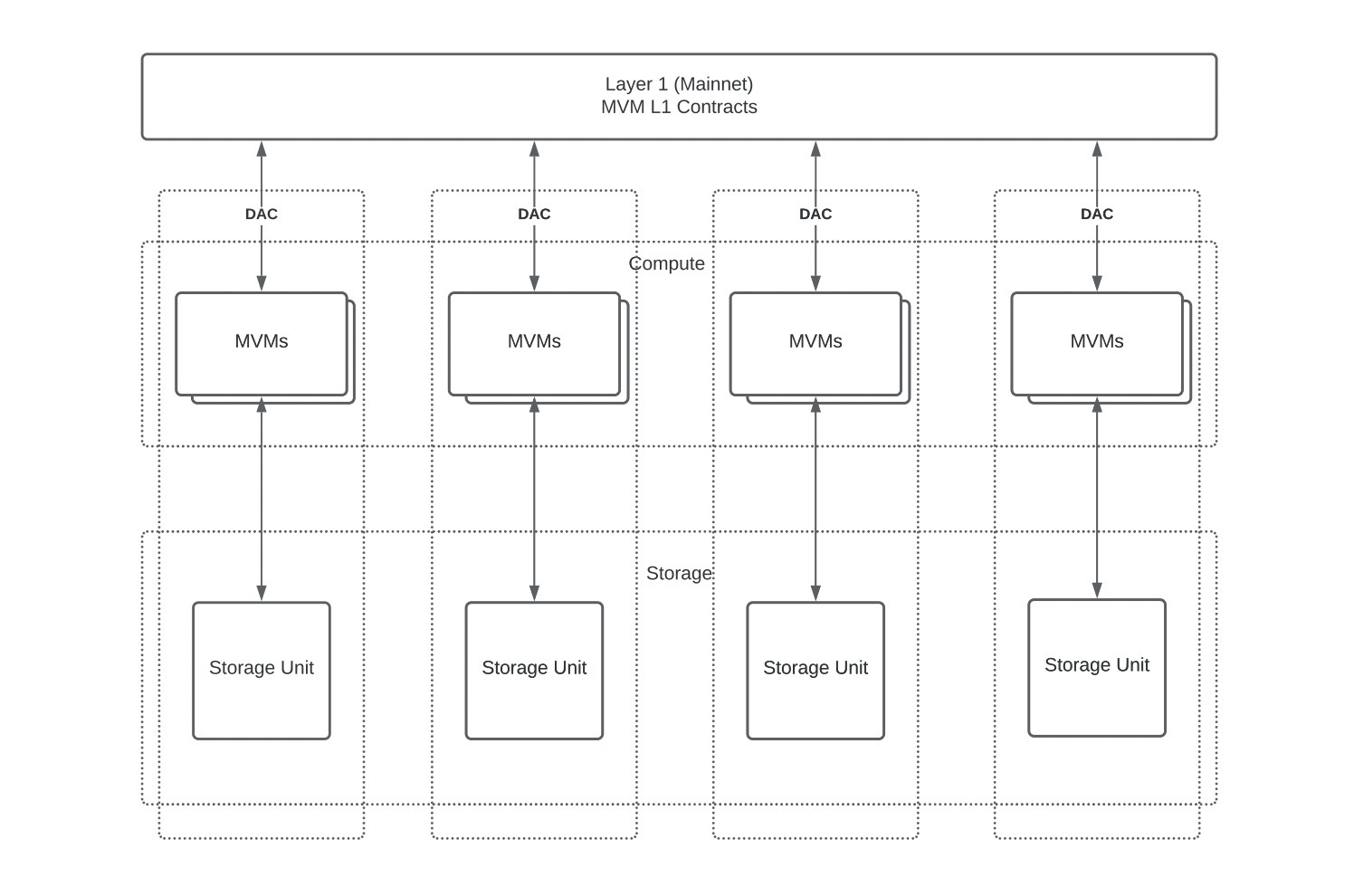
Initially, sequencer nodes in Metis were created by screened users and accompanied by a staking mechanism. Users could become new sequencer nodes by staking METIS tokens, and other participants in the network could supervise these nodes, increasing the transparency and trustworthiness of the entire system.
Metis also provides staking rewards to members participating in sequencer nodes, offering additional METIS rewards in addition to regular gas income. This mechanism encourages more members to participate, strengthening the concept of decentralization and enhancing the robustness and scalability of the network. Furthermore, node staking helps reduce the circulating supply of METIS, potentially positively impacting the long-term value of the token. With continued commitment and participation from community members, Metis has created an environment that rewards member contributions and promotes the healthy development of the entire ecosystem.
Current Ecosystem Partnerships
Up to 81 ecosystems and applications have partnered with Metis DAO, including Bridge, CEX, DEFI, Gamefi, and many other tracks, with ongoing expansion. The main forms of cooperation include deployment of Metis, CVP approval, and other collaborations.
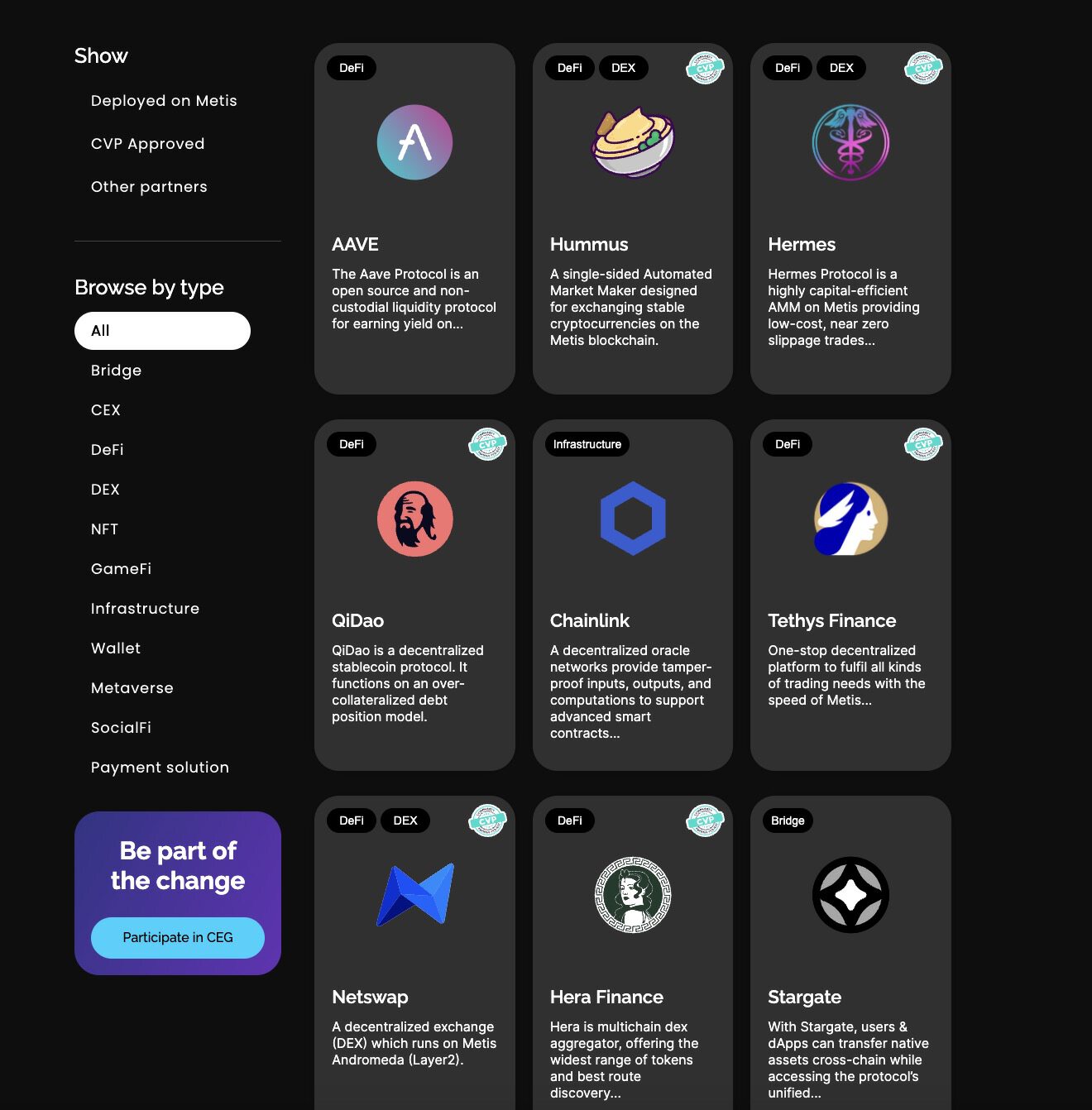
Economic Model
MetisDAO's economic model is based on its decentralized autonomous organization (DAO) platform's operation and governance mechanism. Here are some important details about the MetisDAO economic model:
Multi-layer solution stack: One of MetisDAO's strategic focuses is to build a multi-layer solution stack for the Web3 economy. This stack includes the Ethereum mainnet as the cornerstone, providing security, decentralization, and finality. Metis Smart L2 is an execution layer equivalent to the Ethereum Virtual Machine (EVM), with fast transaction speeds and low costs. However, there is still a gap between the infrastructure layer and the application layer. To support all applications and the entire Web3 economy, MetisDAO is working to expand the functionality and scalability of Smart L2 to strengthen the infrastructure of the entire Web3 economy.
Ecosystem nodes: MetisDAO views ecosystem nodes as contributors to the entire Metis ecosystem and as the foundation for the foundation's growth. Over the past year, the MetisDAO Foundation has actively collaborated with some ecosystem contributors and supported them in piloting ecosystem nodes. These ecosystem nodes include Smart L2, Matrix Reputation Power, DAC Framework, and P1X.
DAC framework: The MetisDAO economic model also involves the use of the DAC (decentralized autonomous company) framework. Metis describes DAC as a subclass of DAO, focusing on addressing the day-to-day operational and management issues of projects. The DAC framework aims to build sustainable, decentralized companies on high-performance underlying blockchains. Through the DAC framework, anyone can deploy DAOs or DACs on-chain and run and manage their own communities, applications, and enterprises.
Overall, the MetisDAO economic model aims to support the development of the Web3 economy by building a multi-layer solution stack and developing ecosystem nodes. Additionally, through the DAC framework, MetisDAO provides a way to create, manage, and develop decentralized autonomous companies.
Token Allocation
Metis' native token is METIS, with a total supply of 10 million.
There are 18,316 holding addresses for METIS, and it was issued in May 2021. Shares for investors, advisors, the founding team, etc., have all been unlocked. 52% of the tokens exist in Metis' mainnet, and apart from this portion, the top ten other addresses hold relatively small amounts, indicating relatively widespread distribution of the tokens.
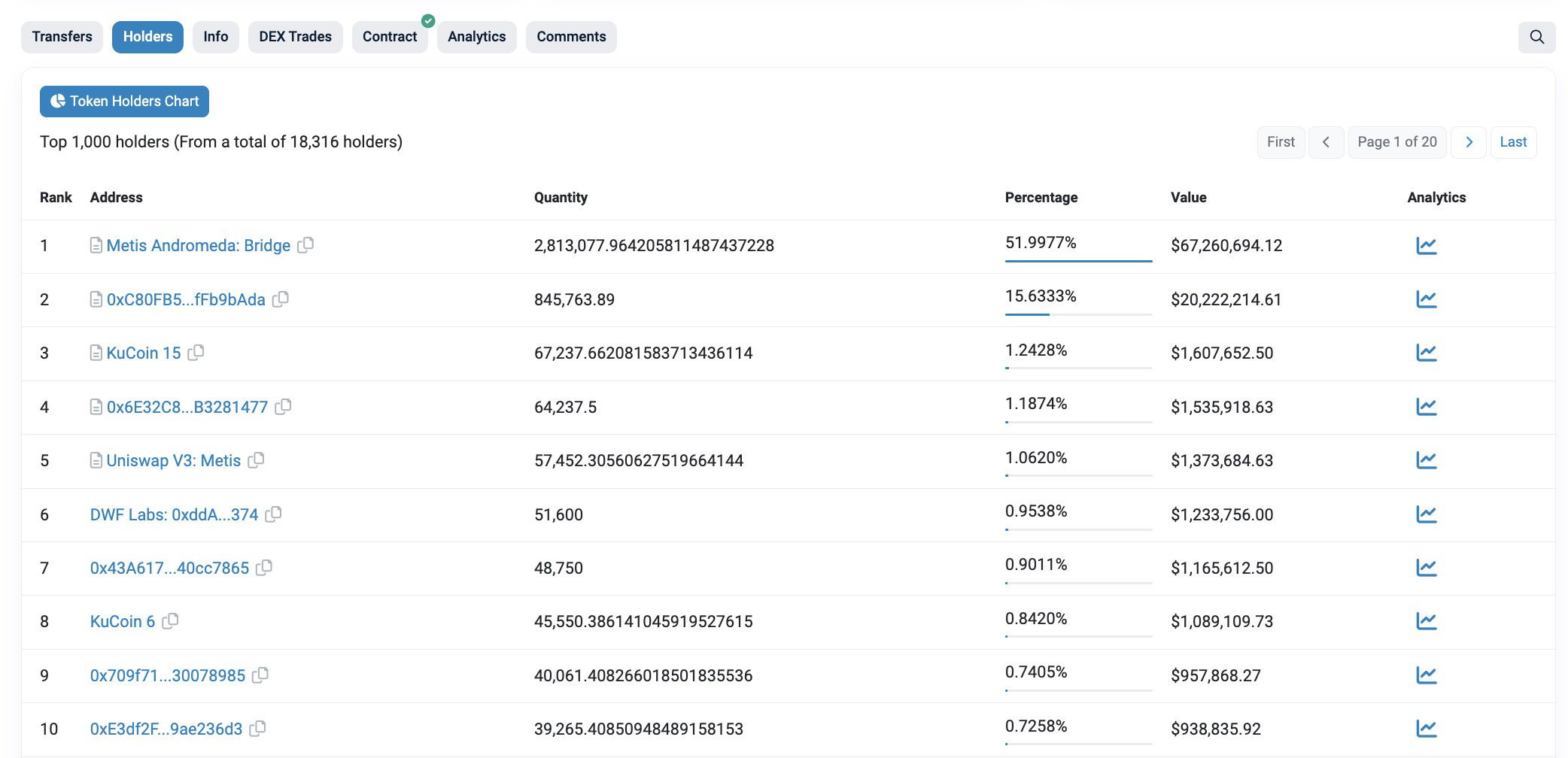
Metis Roadmap
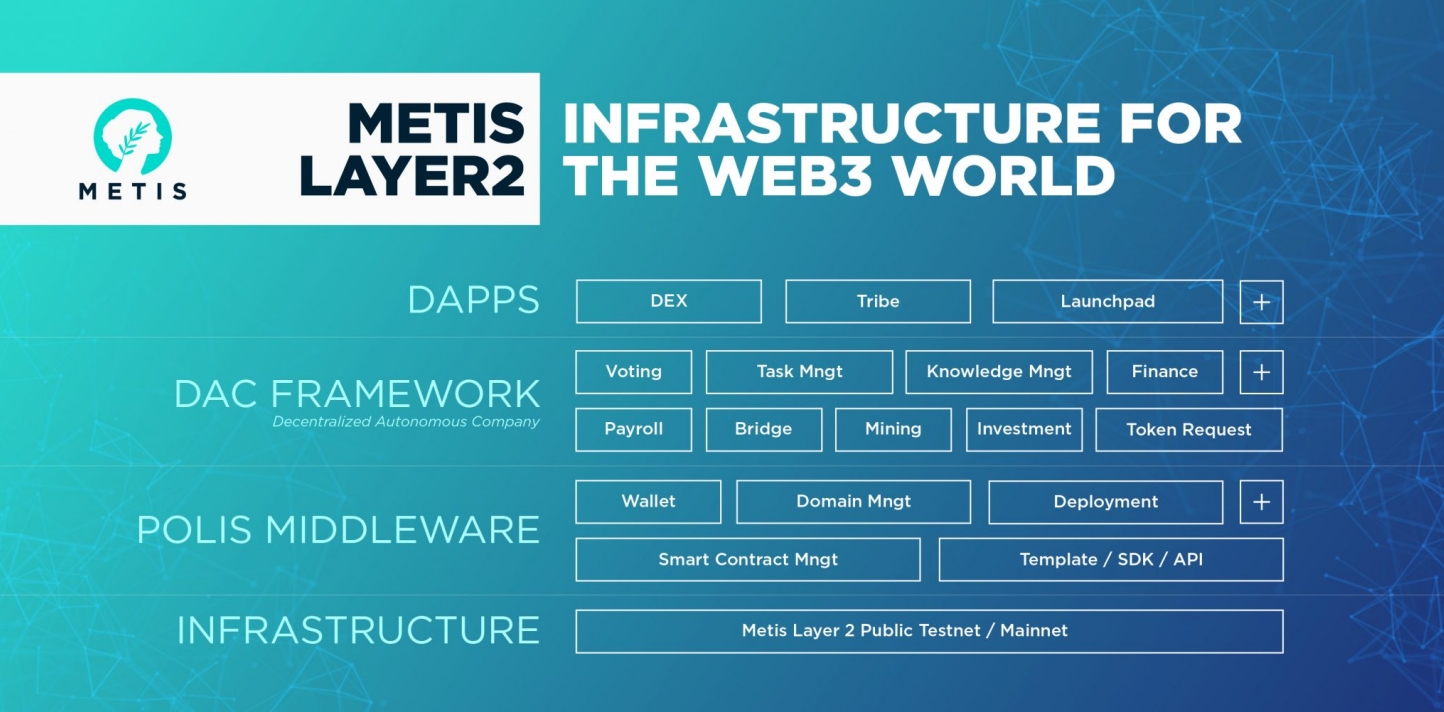
Summary of the Metis Project
Currently, Metis is in a leading position compared to other competitors in the same track, with a large number of partnerships and access to multiple tracks, ensuring that users can see Metis in various ecosystems and helping more projects enter the process and launch.

The current price is 23.97U. Over the past two years of continuous development, the number of holders and token prices have gradually increased with the expansion of the ecosystem, with a market value of around 100 million. Hot topics include Zero Knowledge Proofs, Scaling, Layer 2, Rollups, and more.
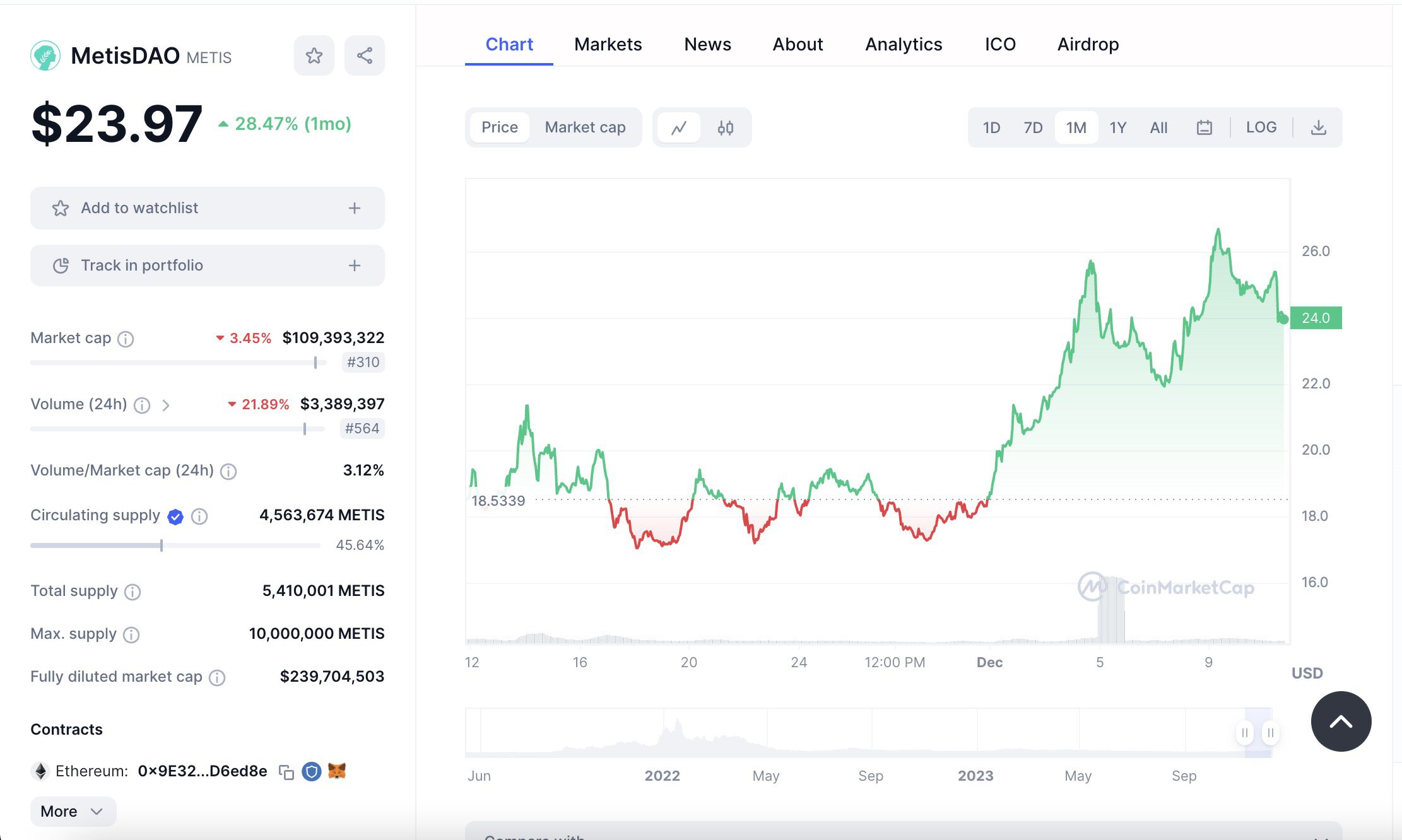
Advantages of Metis Token (METIS) include:
Powerful Layer2 infrastructure: Metis provides not only reduced gas fees and improved transaction efficiency, but also focuses on the scalability and ease of construction of functionalities on Layer2.
Decentralized Autonomous Company (DAC) architecture: Metis integrates DAC architecture into its Layer2 infrastructure, making it easy for developers, projects, and community leaders to build applications and communities.
User-friendly: Metis simplifies application development and collaborative management using preset tools, templates, and interfaces, allowing projects and communities to enjoy the benefits of the Ethereum ecosystem while avoiding its cost and efficiency bottlenecks.
Scalability and performance: Metis emphasizes high scalability, supports multiple virtual machines and microservices frameworks, and provides a high-performance, low-cost development and usage experience.
Decentralization: Compared to centralized sidechains, Metis provides a fully decentralized solution, with all business activities conducted on the sidechain, ensuring high privacy.
Security: Metis has a high level of security and privacy for business activities, visible only to participants.
Support for a wide range of user cases: From NFT platforms and decentralized social platforms to game communities, Metis' Layer2 infrastructure supports a variety of applications.
Metis combines the advantages of Web3.0, Layer2, and DAO, indicating that it will play an important role in future blockchain technology and applications. With the growing demand for Ethereum scalability, Layer 2 technologies and projects like Metis will receive more attention. The emergence of Metis is not only a new milestone in the Layer 2 field, but its unique technical architecture and organizational structure have already attracted a lot of attention from developers and users, becoming a key infrastructure driving the development of the Web3 economy.
免责声明:本文章仅代表作者个人观点,不代表本平台的立场和观点。本文章仅供信息分享,不构成对任何人的任何投资建议。用户与作者之间的任何争议,与本平台无关。如网页中刊载的文章或图片涉及侵权,请提供相关的权利证明和身份证明发送邮件到support@aicoin.com,本平台相关工作人员将会进行核查。




